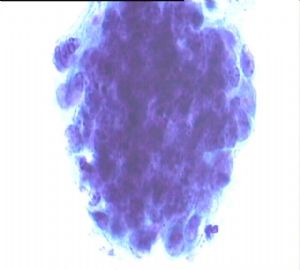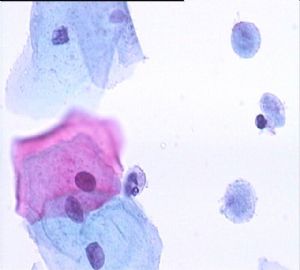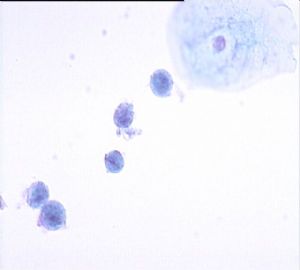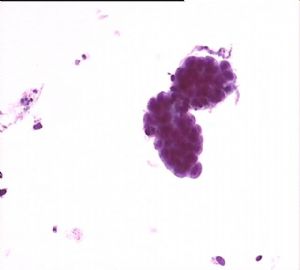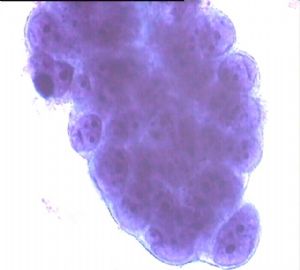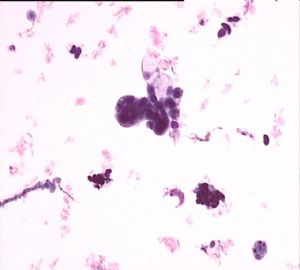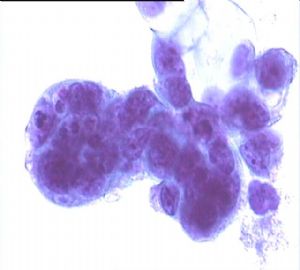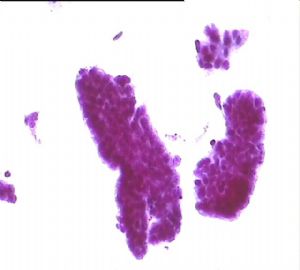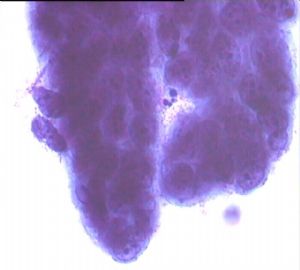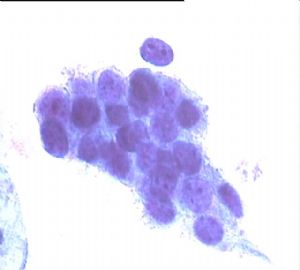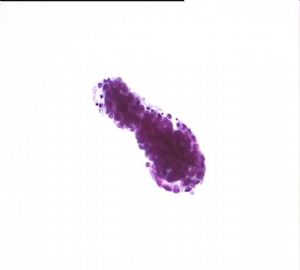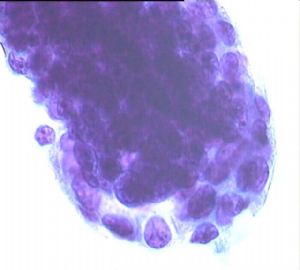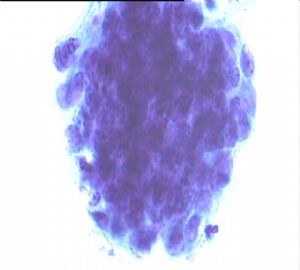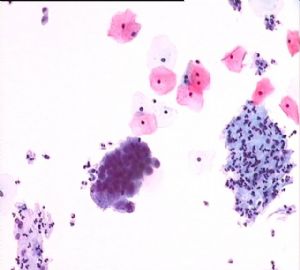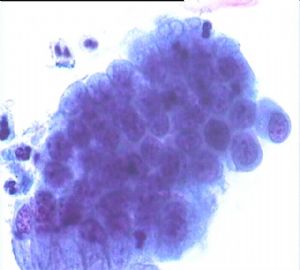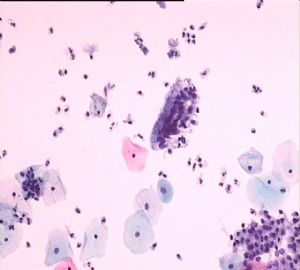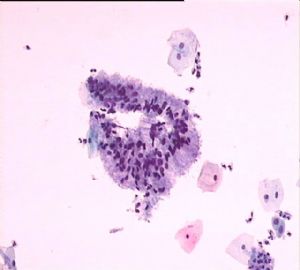| 图片: | |
|---|---|
| 名称: | |
| 描述: | |
- 分享新春礼物!
-
本帖最后由 于 2009-02-08 14:31:00 编辑
试着翻译第9楼赵老师的回答,翻译不好请老师补充:
1 。AGC,子宫颈。细胞核增大、大小不等伴随细胞核拥挤和重叠。临床情况? ? ?应活检。
2 。腺癌。不知道来源。
3 。AGC,子宫内膜来源。三维结构细胞团伴有细胞核不规则、深染和重叠。应做子宫内膜和宫颈活检。
4 。 三“只”滴虫。
AGC上升到古哲学问题“杯子是半满的还是半空的?”
我看过的所有AGC的研究论文,包括我组织的研究( 5 细胞病理学家 ,3个细胞研究员) 。所有的研究表明:病理学家、细胞病理学家、不同的医院、细胞病理专家之间的诊断一致性(重复性)是很难的 。
从我的2次回复中,你可以知道我甚至不同意自己。哈,哈。 (肯定——否定——肯定?)
希望更多的人写下你的诊断。在这里,你的答案对与错不重要。重要的是,在我们实际的临床工作中,我们应该学习如何处理这些类似的情况,基于患者的临床资料、过往的巴氏病史、人乳头瘤病毒的结果、年龄等。读真正的涂片和电脑上的照片是不同的。
谢谢兰青风采分享这些照片。
-
本帖最后由 于 2009-02-08 01:13:00 编辑
Ok, I change my dx now after using the high power and thinking more in true practice
1. AGC, endocervical. Enlarged, variablely sized nuclei with some crowding and overlap of nuclei. The cili??? Should biopsy.
2. Adenocarcinoma. no way to tell the origin.
3. AGC, endometrial orgin. Three-dimensinal cluster of cells with irregular, hyperchromatic and overlapped nuclei. Should have endometrial and endocervical biopsy.
4. ThreeTrichomonas
AGC raises the old philosophical question " is the glass is half full or half empty?"
I read all AGC agreement study papers including the study I organized (5 cytopathologists, three cytofellows). All studies indicated that the agreement is very poor among the pathologists, cytopathologists, different hospitals, expert cytopathologists.
From my two times of answers you can know that I even do not agree with myself. Ha, ha.
Hope more people write your dx. It is not important your answers are right or wrong here. The importance is that we should learn how to handle these similar cases in our clinical practice based on patients' clinical information, previous Pap history, HPV result, age et al. Reading true slides and photos on cmputer are different.
Thank 兰青风采 for sharing these photos.
| 以下是引用lw在2009-2-6 21:48:00的发言:
我觉得1图应该是正常的颈管细胞 2图来源于子宫内膜的腺癌 3图 不好确定 4图应该是滴虫吧 呵呵 |
My following answers are based on that if I am taking a test, but not the true clinical practice. This is why I answered the four questions with 2 minutes
1. Reactive endocervical cells
2 Adenocarcinoma; orign may be endometrial.
3. Normal cluster of endometrial cells
4. Trichomonas



